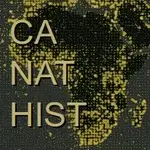Welcome to the Collections of the Royal Belgian Institute of Natural Sciences (RBINS)
| The size of our collections is estimated at 38 million specimens. That collection makes us one of the ten most important natural history collections in the world. Togheter with the collection of the AfricaMuseum (10 millions specimens) and the federal collection of the Meise Botanic Garden (4 millions), the Belgian Federal collection is the largest in Europe after Paris and London. These collections, which are the result of many decades of exploration and research, help us to better understand the history of life on Earth and biodiversity, and to come up with better ways of protecting the environment. |
|
The specimens collections can be roughly divided up into six categories: entomology, recent invertebrates, recent vertebrates, anthropology, palaeontology and geology. RBINS has also a large specialized library and publishes scientific publications which are for many available in Open Access. |
Percentages derived from median of upper and lower range of log scale. Log Scale: 0 = 0 specimens; 1 = 1-10; 2 = 11-100; 3 = 101-1000; 4 = 1001-10000; 5 = 10001-100000; 6 = 100001-1000000; 7= 1000000+ |
|
See also the geographical distribution of the RBINS collections or click on the pictures below for a more detailed overview. |
|
|
|
||
 |
|||













